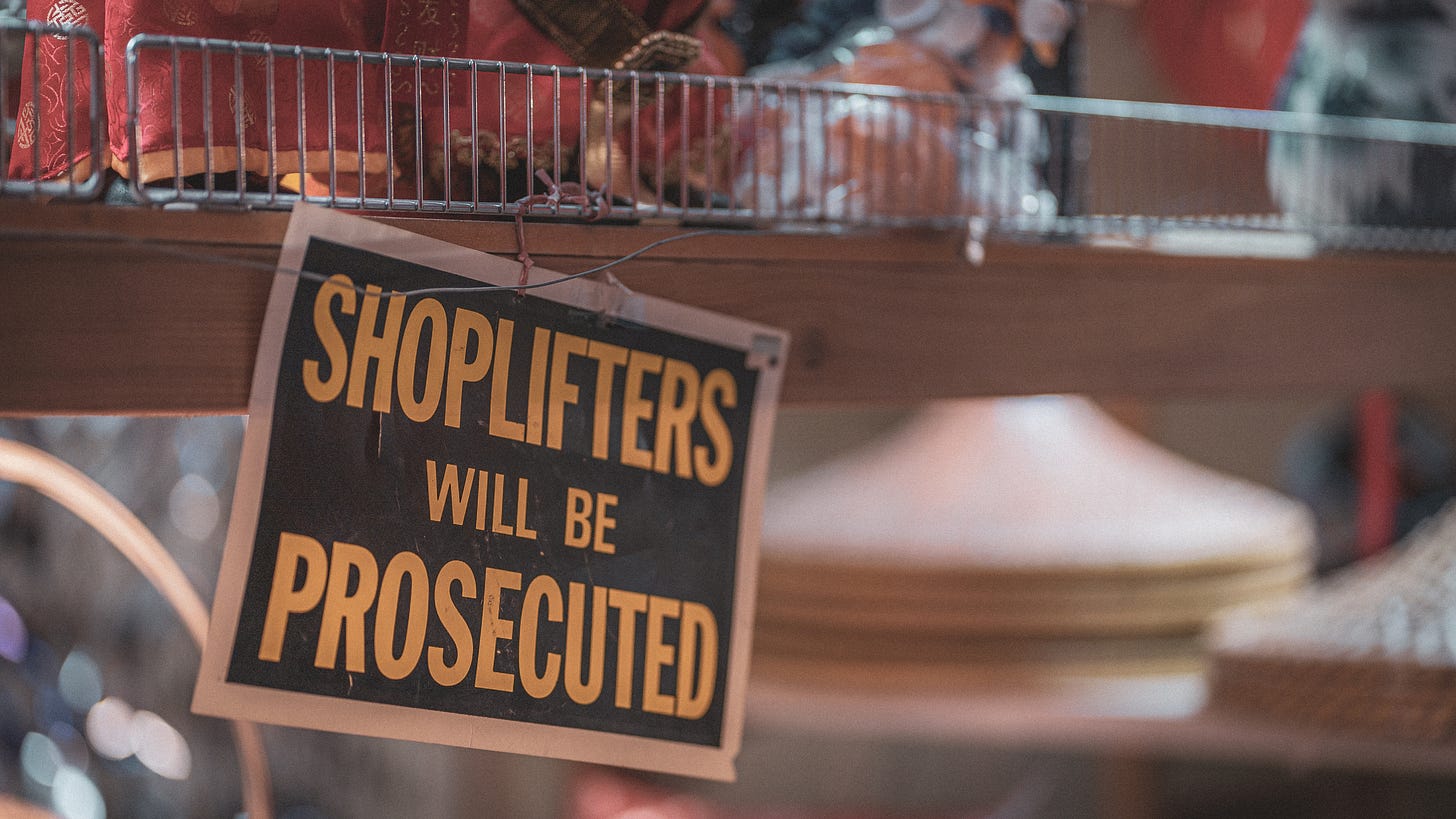Shoplifting on the rise in Sebastopol
Local merchants banding together to deter shoplifters
The Sebastopol Chamber of Commerce hosted a meeting on Wednesday night with local merchants and Police Chief Ron Nelson to discuss the growing problem of shoplifting in Sebastopol’s business districts.
“It’s definitely on the increase,” said Myriah Volk, the new director of the Sebastopol Chamber of Commerce.
Gwion Raven, co-owner of Milk and Honey, agreed. He noted that mentions of shoplifting incidents on the local merchant Instagram group were more frequent than ever before.
“We used to see it mentioned every couple of months,” he said. “Now it’s weekly.”
And the profile of the shoplifter has changed.
“It used to be mostly teenagers. Now that’s flipped,” said Funk and Flash owner Zoë Luna. “Now it’s transients, homeless people and other adults. And people on bikes. They just grab things and ride off.”
Raven added, “It’s not always who’d you’d suspect. It’s middle-aged women. The elderly.”
“Sometimes it’s people who could absolutely afford to buy the things they’re taking,” Nelson said. “It’s baffling.”
Store owners varied in their response. Luna said she will literally chase people down the street. Others are more reserved.
“I have kids working in my store—high school kids—and I tell them not to confront,” said one store owner. “You just don’t know who you’re dealing with these days.”
That said, confronting people sometimes works. Shana Barrett’s daughter, who works at Lucky Roots, confronted a shoplifter, saying “I know you have items under your dress. If you give them back, I won’t call the cops.” The woman burst into tears, gave everything back and stuttered “I have a problem.”
Confrontations don’t always end so politely. “They usually throw the stuff back at me or flip me off,” Luna said of her encounters with shoplifters. She has actually put photos of shoplifters on her front door, as a form of public shaming.
“I ban people who shoplift from the store,” she said.
Merchants in the downtown area also alert each other if they see a shoplifter at work. Many of the stores have security cameras and employees sometimes take photos of suspected shoplifters in real time and send them to every other merchant on the street, warning them to keep their eyes out for that person.
Chief Nelson shared some tips about how to discourage the shoplifting, including paying the person a lot of “friendly” attention and keeping valuable merchandise in a secure display.
He also suggested that merchants call the police the moment they see someone shoplifting. He said there’s a chance the police will get there before the shoplifter leaves the store or that they’ll be able to catch them on the street once they leave. Nelson said the police are often able to retrieve and return merchandise in these circumstances. (Luna attested that the police had retrieved merchandise that had been stolen from her store in this way.)
Nelson said that legislation (he mentioned Proposition 47) had made it harder to catch and punish shoplifters and other thieves.
“They think, ‘There’s not a lot that will happen to me even if they catch me.’ And they’re right. It’s unfortunate,” he said.
Although there are few punishments on the books for shoplifting these days, Nelson asked the merchants to always report incidents of shoplifting. He said it’s important to have a record of what’s happening in town. And in the case of repeat shoplifting by a single individual, he said that if merchants press charges over time the police can sometimes get a restraining order that effectively bans that person from the entire shopping district.
Nelson said the increase in shoplifting had complex roots.
“Economics is part of it, but there are social and cultural reasons,” he said. “This culture has developed where people feel emboldened to walk into stores and steal things, and they don’t even disguise it.”
He and some of the other merchants mused whether the decision on the part of major chains, like Safeway, to not even attempt to stop shoplifters is part of the problem. Two merchants with teenage children said that stealing from Safeway was incredibly common among local teenagers these days—because there was virtually no attempt to stop it.
Serafina Palandech, who recently opened a new store, Luminarium, on Main Street, suggested creating something like a Neighborhood Watch program to deter shoplifting in the area, and Volk said the chamber would help with that.
“I’m not suggesting we become vigilantes,” Palandech said with a laugh. “I’m just thinking of some very visible program that would let shoplifters know that we’re aware of what’s happening, that we’re all watching, and that we’re all working together to stop it.”



I am sad to see this. I walked past a guy with a black shirt labeled “Security” at Pacific Market yesterday. It is the first time since I moved here nearly 40 years ago that this has been necessary in any local business. I wish I had a constructive answer.